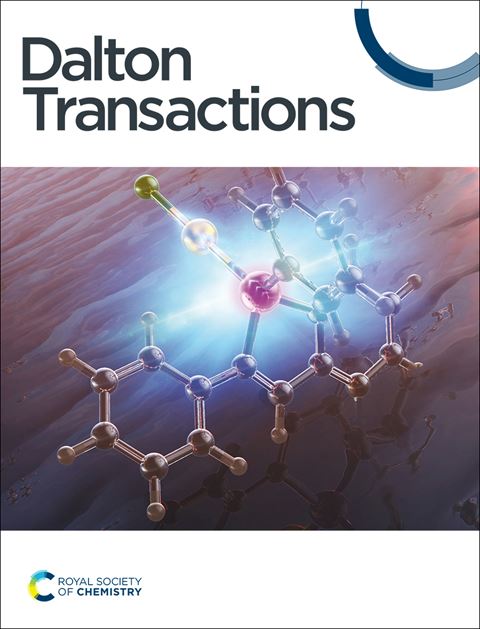用铵离子催化转移锌
IF 3.3
3区 化学
Q2 CHEMISTRY, INORGANIC & NUCLEAR
引用次数: 0
摘要
碳氢锌化是制备有用有机锌化合物的有效途径。迄今为止,大多数方法都是通过底物pKa控制芳基C-H锌化的选择性来实现的。本文报道了一种杂芳基C-H锌化方法,该方法使用易于获得的(β-二氯胺酸盐)Zn-Me配合物和[(R3N)H][阴离子],并在电子控制下进行。这个催化过程是阴离子依赖的;配位度较低的阴离子[B(C6F5)4] -优于[CHB11H5Br6] -,后者形成亲密离子对[(β-二氯胺酸盐)Zn(CHB11H5Br6)]。Zn-Me配合物和[(R3N)H]+盐也能催化C-H硼化反应。可行的转移锌化的一个关键要求是锌-烷基和[(R3N)H]+之间的低势垒质子分解反应。本研究发现锌-甲基和锌-乙基体系之间的显著差异源于锌-乙基同系物中空间拥挤的增加。对于后者,SE2(开放)质子分解过渡态被迫通过次优非线性Zn··c·α···HNR3取向进行,从而增加了该势垒的能量(与Zn - me类似物相比)。虽然这个初始过程的范围是有限的,但这项工作表明,催化亲电转移。本文章由计算机程序翻译,如有差异,请以英文原文为准。
Catalytic Transfer Zincation Using Ammonium Cations
C–H zincation is an efficient route to useful organozinc compounds. To date, most approaches effect aryl C–H zincation with selectivity controlled by substrate pKa. Herein, we report a heteroaryl C–H zincation method that uses an easy to access (β-diketiminate)Zn–Me complex and [(R3N)H][Anion] and proceeds under electronic control. This catalytic process is anion dependent; the less coordinating anion [B(C6F5)4]– proved superior to [CHB11H5Br6]–, with the latter forming the intimate ion pair [(β-diketiminate)Zn(CHB11H5Br6)]. The Zn–Me complex and the [(R3N)H]+ salt can also initiate catalytic C–H borylation. A key requirement for a viable transfer zincation is a low barrier protonolysis reaction between the zinc-alkyl and [(R3N)H]+. This study found significant differences between the zinc-methyl and zinc-ethyl systems which stem from increased steric crowding in the zinc-ethyl congener. For the latter, the SE2(open) protonolysis transiton state is forced to proceed through a sub-optimal non-linear Zn···Cα···HNR3 orientation which increases the energy of this barrier (vs. that for the Zn–Me analogue). While the scope of this initial process is limited, this work demonstrates that catalytic electrophilic transfer.
求助全文
通过发布文献求助,成功后即可免费获取论文全文。
去求助
来源期刊

Dalton Transactions
化学-无机化学与核化学
CiteScore
6.60
自引率
7.50%
发文量
1832
审稿时长
1.5 months
期刊介绍:
Dalton Transactions is a journal for all areas of inorganic chemistry, which encompasses the organometallic, bioinorganic and materials chemistry of the elements, with applications including synthesis, catalysis, energy conversion/storage, electrical devices and medicine. Dalton Transactions welcomes high-quality, original submissions in all of these areas and more, where the advancement of knowledge in inorganic chemistry is significant.
 求助内容:
求助内容: 应助结果提醒方式:
应助结果提醒方式:


